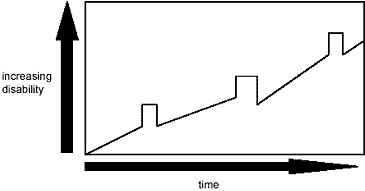Types of MS
The course of MS is unpredictable. Some people are minimally affected by the disease while others have rapid progress to total disability, with most people fitting between these two extremes.
Although every individual will experience a different combination of MS symptoms, there are a number of distinct patterns relating to the course of the disease.
In general four typical patterns of MS can be:
Relapsing-Remitting MS (RRMS)
RRMS is the most common form of the disease. It is characterized by clearly defined acute attacks with full recovery (1a) or with residual deficit upon recovery (1b).
Periods between disease relapses are characterized by a lack of disease progression. Approximately 85% of people with MS begin with a relapsing-remitting course.
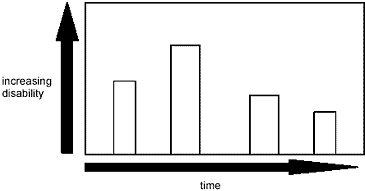
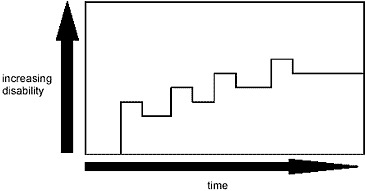
Primary Progressive MS (PPMS)
PPMS is characterized by progression of disability from onset, without plateaus or remissions (2a) or with occasional plateaus and temporary minor improvements (2b). A person with PPMS, by definition, does not experience acute attacks. Of people with MS are diagnosed, only 10% have PPMS. In addition, the diagnostic criteria for PPMS are less secure than those for RRMS so that often the diagnosis is only made long after the onset of neurological symptoms and at a time when the person is already living with significant disability.


Secondary-Progressive MS (SPMS)
SPMS begins with an initial relapsing-remitting disease course, followed by progression of disability (3a) that may include occasional relapses and minor remissions and plateaus (3b). Typically, secondary-progressive disease is characterized by: less recovery following attacks, persistently worsening functioning during and between attacks, and/or fewer and fewer attacks (or none at all) accompanied by progressive disability. According to some natural history studies, of the 85% who start with relapsing-remitting disease, more than 50% will develop SPMS within 10 years; 90% within 25 years. More recent natural history studies (perhaps because of the use of MRI to assist in the diagnosis) suggest a more benign outlook that these numbers suggest. Nevertheless, many patients with RRMS do develop SPMS ultimately.
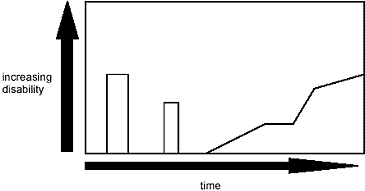
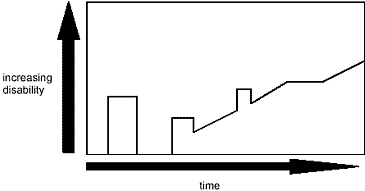
Progressive-Relapsing MS (PRMS)
PRMS, which is the least common disease course, shows progression of disability from onset but with clear acute relapses, with (4a) or without (4b) full recovery. Approximately 5% of people with MS appear to have PRMS at diagnosis. Not infrequently a patient may be initially diagnosed as having PPMS and then will experience an acute attack, thereby establishing the diagnosis of PRMS.
